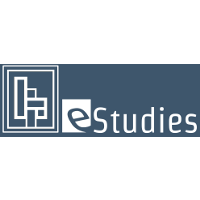How to analyze a source
There is a plethora of sources out there that are of interest to historians, students, and scholars doing historical research. Depending on the type of source, different insights can be gained and different questions must be asked.
Generally, you want to ask yourself when and where the source was created; was the primary source created directly after the event (i.e. a battle, a demonstration, a public speech etc.) to which it refers, or years later (in which case the memory might be clouded)? Was the author a participant in the event, a firsthand observer, or do they use interviews of active participants to describe the event?
Why it was created and by whom; is your source a diary that was intended to be kept private? Is it an advertising image that was popularized in various magazines?
Is it a “reliable source”? We assume that every source is biased in some way. Documents tell us only what the creator of the document thought happened, or perhaps only what the creator wants us to think happened. Thus, historians must always read sources skeptically and critically and not take the given content at face value.
Questions for analyzing a source can thus be:
- Who created the source?
- Why was it created?
- When and where was it created?
- Was it intended for public use and circulation, or is it rather a source for personal use (such as diaries, family photographs, letters etc.)?
- Does the source intend to persuade its audience?
- Does the creator seem reliable and honest?
- Does the information seem accurate (double check with other sources and/or secondary texts)?
There is a great variety of primary sources that are of interest. These can be presidential addresses, letters, diaries, speeches, i.e. textual sources, but also audio-visual ones such as posters, movies, postcards, advertisements and so on. Among the most common types of sources are:
- Published Documents
Some primary sources are published documents. They were created for large audiences and were distributed widely. Published documents include books, magazines, newspapers, government documents, non-government reports, literature of all kinds, advertisements, maps, pamphlets, posters, laws, and court decisions.
- Unpublished Documents
Many types of unpublished documents have been saved and can be used as primary sources. These include personal letters, diaries, journals, wills, deeds, family Bibles containing family histories, school report cards, and many other sources. Unpublished business records such as correspondence, financial ledgers, information about customers, board meeting minutes, and research and development files also give clues about the past.
- Oral Traditions/Oral Histories
Oral traditions and oral histories provide another way to learn about the past from people with firsthand knowledge of historical events. Oral histories provide important historical evidence about people, especially minority groups, who were excluded from mainstream publications or did not leave behind written primary sources. Oral histories are as old as human beings. Before the invention of writing, information passed from generation to generation through the spoken word. Many people around the world continue to use oral traditions to pass along knowledge and wisdom. Interviews and recordings of community elders and witnesses to historical events provide exciting stories, anecdotes, and other information about the past.
- Visual Documents and Artifacts
Visual documents include photographs, films, paintings, and other types of artwork or popular culture artefacts. Because visual documents capture moments in time, they can provide evidence of changes over time. Visual documents include evidence about a culture at specific moments in history: its customs, preferences, styles, special occasions, work, and play.
(For further info see, Teaching with Documents)
- Objects and Artifacts
Sources for historical analysis need not be text-based, although studying material culture through physical objects is often complicated by a lack of accessibility. Nonetheless, objects such as tools, furniture, toys, and clothes can give evidence to how people lived in the past. The same questions as for written sources are relevant when examining objects and one should also consider how an object was used, by whom and when.
Example Questions for Various Types of Sources:
- Artifact: What kind of material? What does it look and feel like? What’s the shape, size, color, texture of it? Is there anything printed on it? What might have been its use? Who might have used it and when? Was it an everyday item, or rather reserved for special occasions? Does it tell you anything about the technology at the time?
- Photograph: What’s your overall impression of/initial response to the photograph? What can be seen on the photograph? What’s in the foreground, what’s in the background, why that framing? Try to read the photograph as if it were a text and try to get as much information as possible out of it (people, objects, activities). When was it possibly taken? By whom? For what purpose? Was it privately used or widely distributed/reprinted?
- Poster: What are the main colors? Or is it black-and-white? Is there a verbal or visual message? Is it dramatic, subtle, attention-catching? What is the intended audience for the visual? Where was it published? When and by whom?
- Written Document: Is it a newspaper, a letter, a diary, an advertisement, a report, a speech, a press release etc.? Is it handwritten or typed, labelled “confidential” or open to public access? Who created it, when and why? Is the author a well-known historical figure?
- Motion Picture: Is it a movie, a documentary, a newsreel, a propaganda film, a commercial etc.? What can be gleaned from the title? When was it released? Any info on who directed it? What was the intended audience? What are the characters like? What is the plot about? What about music, the camera work, the actors? For further information consult the AGuF.
For further info refer to Clearinghouse’s Guide and University of Delaware.
